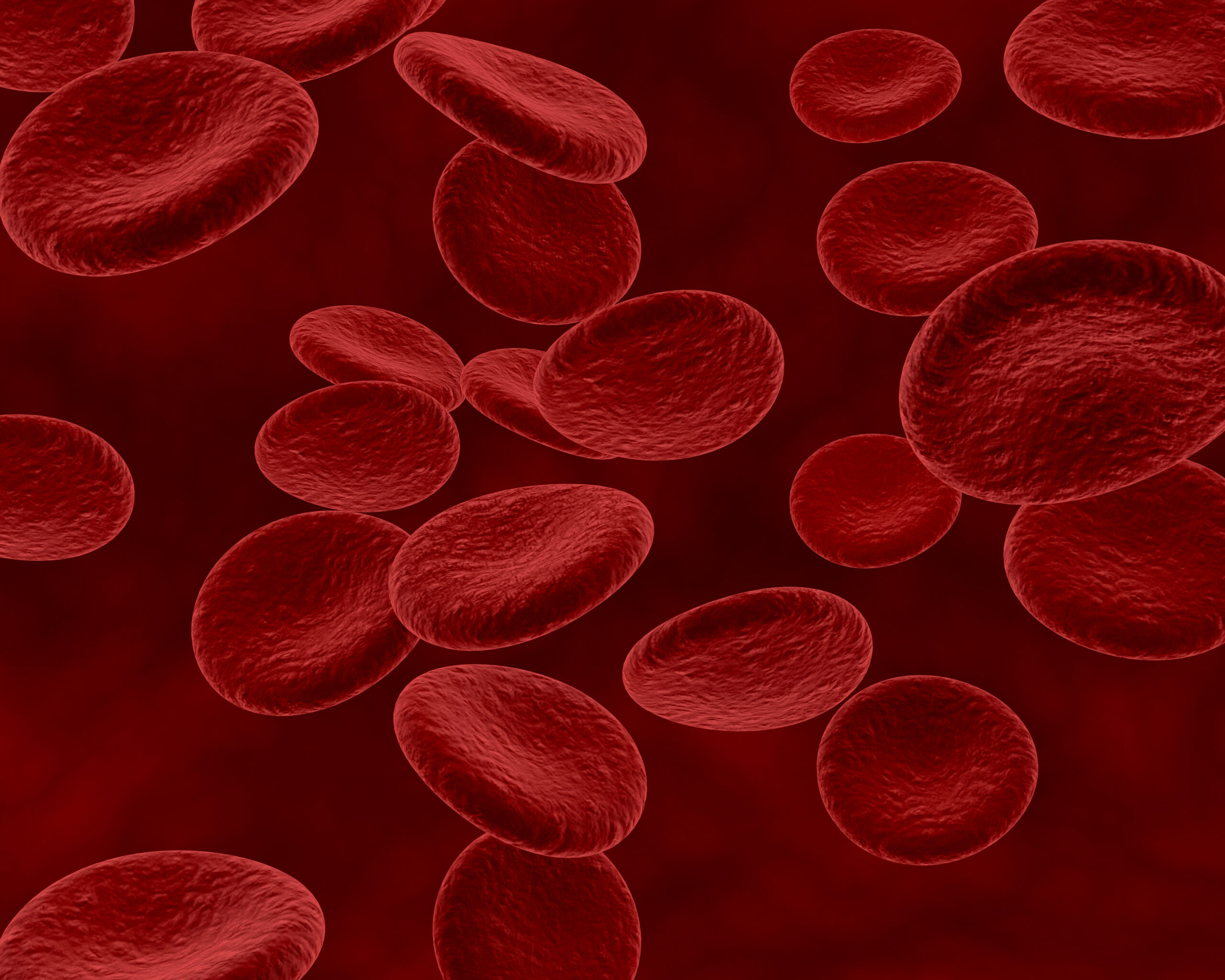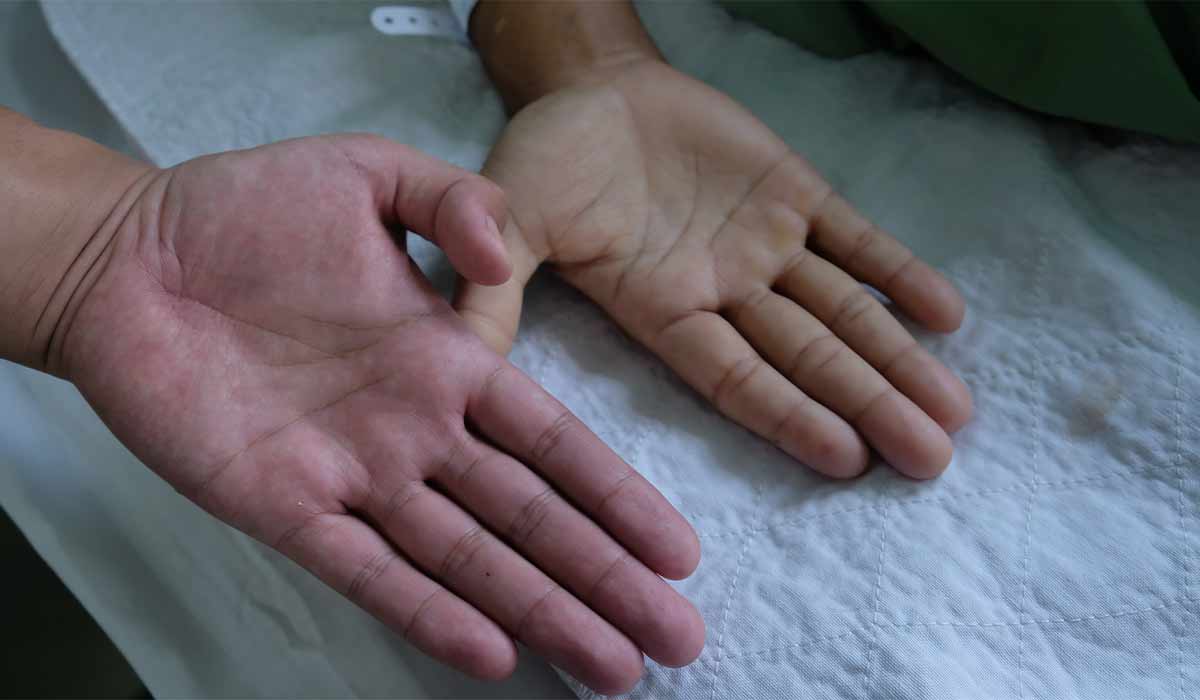A morphology involves quantitatively determining the morphotic elements and qualitatively assessing specific features of their structure. Usually, we do blood morphology, which we will discuss more in this article. It is the assessment that evaluates the red blood cell system, white blood cell system, and platelets.
The elements that allow for the assessment of the red blood cell system![]() are:
are:
These factors help doctors rule out anemia and assess hemoglobin production. Evaluating red blood cells helps determine cell size, hemoglobin content, and anisocytosis, which are vital for a comprehensive diagnosis.

The elements describing the white blood cell system![]() are:
are:
Also, assessment of the granulocyte fraction, including:
The last element of the morphological examination is the determination of the number of platelets![]() . Those include:
. Those include:
Regular blood counts are essential and should be conducted at least annually. Moreover, there are specific indications for the morphology![]() test, including but not limited to:
test, including but not limited to:
To perform a complete blood count![]() , blood is taken in a small amount, which does not affect the patient's condition. For this reason, there are no contraindications to its performance.
, blood is taken in a small amount, which does not affect the patient's condition. For this reason, there are no contraindications to its performance.
Blood for the test is taken in a sitting position, sensitive people should be in a lying position.
Information to report before the test include:
For the morphology result to be reliable, you must properly prepare for the test.
When getting ready for the test, it's important to remember that the blood morphology should be taken in the morning, and you should be fasting. This means no eating or drinking anything after dinner the night before the test, ideally for 12 hours. Sometimes the test can be done 5-6 hours after the last meal – inform the doctor about this as it may affect the test results due to postprandial leukocytosis, a temporary increase in white blood cells after a meal.
Before the morphology, it's best to avoid stress and strenuous exercise and ensure you get a good night's sleep. Also, it's recommended to abstain from alcohol for 2-3 days before the test.
Ideally, the blood morphology should not be done during menstruation, fasting, or overeating. To obtain accurate results, it's advisable to schedule the test at least 3 days before or after menstruation.

Before collecting blood for morphology, inform your doctor about any medications you take. If possible, they should be discontinued during the test and resumed after blood collection. These medicines include:
These may affect your platelet count.
The interpretation of morphology test results relies heavily on the reference values provided by a specific laboratory. This is because some parameters can be assessed using different methods. It's important to note that a doctor's analysis isn't just about ensuring each indicator falls within the laboratory's specified range. Age, gender, existing medical conditions, and medications also play a crucial role. Children have different norms than adults, and gender further influences the assessment. Additionally, the reasons for ordering and conducting the test are significant, as the results are evaluated based on the symptoms reported by the patient.
Normal range of red blood cells![]() in morphology in women is 4 to 5 million cells/mcL and in men is 5 to 6 million cells/mcL.
in morphology in women is 4 to 5 million cells/mcL and in men is 5 to 6 million cells/mcL.
This test determines the concentration of red blood cells in 1 µl of blood. Red blood cells, which have a disc-shaped, biconcave form, are crucial in transporting life-sustaining oxygen from the lungs to all body tissues and carrying carbon dioxide from the tissues to the lungs for excretion into the atmosphere.
Their production in the bone marrow requires various essential micro- and macroelements, the most important being iron, vitamin B12, and folic acid. A single red blood cell has a lifespan of 120 days, after which it is broken down in the reticuloendothelial system located in the spleen and liver.
An elevated erythrocyte count![]() , or erythrocytosis, can be attributed to various factors. Dehydration can lead to an increase in erythrocytes due to the thickening of the blood, resulting in a higher percentage of erythrocytes in its volume. Chronic hypoxia also prompts the body to produce more erythrocytes, as they serve as carriers of oxygen. This response is mediated by the kidneys, which increase the production of erythropoietin (EPO), a hormone that stimulates erythrocyte production in the bone marrow in response to hypoxia.
, or erythrocytosis, can be attributed to various factors. Dehydration can lead to an increase in erythrocytes due to the thickening of the blood, resulting in a higher percentage of erythrocytes in its volume. Chronic hypoxia also prompts the body to produce more erythrocytes, as they serve as carriers of oxygen. This response is mediated by the kidneys, which increase the production of erythropoietin (EPO), a hormone that stimulates erythrocyte production in the bone marrow in response to hypoxia.
Hypoxia![]() may occur under several circumstances, including exposure to high altitudes where the lower air pressure hinders gas exchange in the alveoli. Smoking cigarettes introduces carbon monoxide, which binds to hemoglobin with a much greater affinity than oxygen, leading to the formation of carboxyhemoglobin instead of oxygenated hemoglobin. This diminishes the blood’s oxygen-carrying capacity. Additionally, conditions such as obstructive sleep apnea (OSA) cause recurrent pauses in breathing during sleep, depleting oxygen reserves in erythrocytes and resulting in hypoxia.
may occur under several circumstances, including exposure to high altitudes where the lower air pressure hinders gas exchange in the alveoli. Smoking cigarettes introduces carbon monoxide, which binds to hemoglobin with a much greater affinity than oxygen, leading to the formation of carboxyhemoglobin instead of oxygenated hemoglobin. This diminishes the blood’s oxygen-carrying capacity. Additionally, conditions such as obstructive sleep apnea (OSA) cause recurrent pauses in breathing during sleep, depleting oxygen reserves in erythrocytes and resulting in hypoxia.
Certain medical conditions, like congenital heart defects, lung diseases, and rare disorders, can also lead to hypoxia and subsequently elevate erythrocyte production. Furthermore, polycythemia vera, a rare disorder characterized by uncontrolled erythrocyte overproduction and tumors that secrete erythropoietin, are potential causes of increased erythrocyte levels. Lastly, the use of glucocorticoids during steroid treatment or in Cushing's syndrome can also contribute to elevated hematocrit values.
Insufficient production of erythrocytes results in a condition known as anemia![]() . This condition can be classified into several types:
. This condition can be classified into several types:
Overhydration causing anemia is an uncommon occurrence.
The normal white blood cells![]() range is 4500–10,000 cells/mcL.
range is 4500–10,000 cells/mcL.
Leukocytes are blood cells that are part of the immune system. They fight pathogens such as viruses and bacteria. Their lifespan ranges from a few days to even 20 years.

An elevated total leukocyte count![]() (leukocytosis) usually indicates an ongoing infection in the body. When the body fights an infection, immature leukocytes are released from the bone marrow into the bloodstream to combat the pathogen more effectively, causing the count to rise to as high as 20,000/µl.
(leukocytosis) usually indicates an ongoing infection in the body. When the body fights an infection, immature leukocytes are released from the bone marrow into the bloodstream to combat the pathogen more effectively, causing the count to rise to as high as 20,000/µl.
A significant surge in the leukocyte count (>30,000/µl) could indicate cancer, such as leukemia or lymphoma, although this is uncommon. A minor, temporary increase may occur if the guidelines for preparing for a blood count are not followed, such as eating a meal or exercising before the test.
Those frequently include:
The rare causes of dicreased leukocytes number![]() are:
are:
The normal range for platelets![]() is 140,000–450,000 cells/mcL.
is 140,000–450,000 cells/mcL.
Platelets, also known as thrombocytes, play a crucial role in blood clotting. They combine with a protein called fibrin at the site of a bleed to form a mesh that prevents excessive blood loss. A platelet count of 50,000/µl is generally considered sufficient for properly functioning the coagulation system. A low platelet count![]() is often a common occurrence, sometimes due to a long interval between blood collection and analysis. However, it can also be linked to a deficiency in vitamin B12 and folic acid, damage to the bone marrow where they are produced, or rare disease syndromes leading to excessive destruction of platelets.
is often a common occurrence, sometimes due to a long interval between blood collection and analysis. However, it can also be linked to a deficiency in vitamin B12 and folic acid, damage to the bone marrow where they are produced, or rare disease syndromes leading to excessive destruction of platelets.
Abnormal values for each parameter in a medical test could indicate different health issues. However, it's essential to consider the overall picture, as each parameter relates to the functioning of specific body systems.
A high count of white blood cells (leukocytosis) often indicates ongoing inflammation, but it could also result from past injuries. Conversely, a low count (leukopenia) is commonly linked to certain medications or past viral infections.
Interpreting red blood cell results is more intricate. Generally, a high count may point to hypoxia or dehydration. At the same time, a low count is often associated with deficiency anemia or chronic diseases and could also result from a previous hemorrhage.
An increased platelet count (thrombocytosis) can be caused by various factors, including iron deficiency anemia, chronic infectious or inflammatory diseases, and alcoholism, as well as the use of certain medications.
Independent interpretation of morphology results can lead to unnecessary stress or fear. Due to the complexity involved, it's crucial to leave the analysis to medical professionals.
Table of Contents

Aplastic anemia is an uncommon blood condition where the bone marrow works improperly. Get to know the ways to identify… read more »

Anemia is when the body does not have enough red blood cells (erythrocytes) to deliver enough oxygen to the tissues.… read more »

The bone marrow is an important part of the human body. Learn to recognise diseases that can occur when the… read more »

Hemoglobin is an important part of the blood. Its deficiency as well as excess negatively affects health. Learn about the… read more »

Leukocytosis is a condition in which the upper norm for white blood cells is exceeded. What are its symptoms and… read more »

Neutrophils are a type of white cell and one of the most essential components of the human immune system. The… read more »

Basal cell carcinoma (BCC) is a form of cancer that develops in basal skin cells. It usually appears on the… read more »

Squamous Cell Carcinoma is a type of skin cancer that comes from the squamous cells in the top layer of… read more »

Abnormal testosterone levels can cause symptoms in men as well as in women. Proper hormone balance is important for health.… read more »